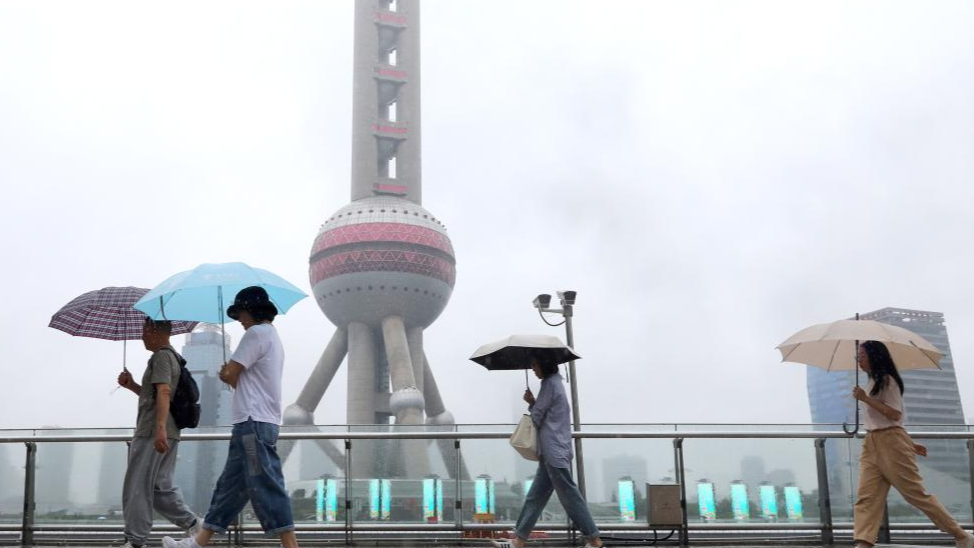
BEIJING - A 0.5 percentage-point reduction in the reserve requirement ratio (RRR) for eligible financial institutions takes effect Thursday, with the move expected to inject roughly 1 trillion yuan (about $139 billion) of long-term liquidity into China's financial market.
The RRR cut, the first such move since the start of this year, came after the seven-day reverse repos rate cut by 0.1 percentage point by the Chinese central bank, which already took effect on May 8.
The reduction in RRR and reverse repos rate, along with expanding re-lending facilities and sci-tech innovation bonds issuance, were among a raft of supportive measures announced last week by monetary and financial regulatory bodies, as the world's second-largest economy steps up efforts to stabilize markets and sustain economic recovery amid external headwinds.
Analysts believe this package of supportive financial policies, by boosting liquidity supplies and reducing borrowing costs for both businesses and residents, will create a favorable financial environment for stabilizing market expectations and make an impact on consumption growth and economic restructuring.
Growing liquidity support
These supportive policies are in line with the guiding principles unveiled at a meeting of the Political Bureau of the Central Committee of the Communist Party of China in April, which called for efforts to accelerate the implementation of more proactive and effective macro policies and make full use of a more proactive fiscal policy and a moderately loose monetary policy.
Maintaining ample liquidity through measures such as the RRR cut can provide sufficient resources for financial institutions and support lending to the real economy, while the reduction in interest rates and innovation in structural monetary policy tools will help stimulate effective domestic demand, a view broadly shared by experts.
"A 0.5 percentage-point cut in the RRR will effectively meet the market's demand for long-term liquidity," said Dong Ximiao, chief researcher at Merchants Union Consumer Finance Company Limited.
ALSO READ: China's first RRR cut for financial institutions in 2025 takes effect
Also starting Thursday, the RRR for auto financing and financial leasing companies is slashed by 5 percentage points to zero percent, with the cut expected to increase the credit supply capacity of these two types of institutions in their respective fields.
Dong said that this notable RRR cut targeting auto financing and financial leasing companies has drawn much market attention because of their anticipated impact on boosting car consumption and equipment upgrade investment.
Reduced borrowing costs
China's central bank governor Pan Gongsheng said last week that the seven-day reverse repos rate cut is expected to result in the loan prime rate (LPR), a market-based benchmark lending rate, dropping by 0.1 percentage point.
Effective on May 8, the interest rates on personal housing provident fund loans were also lowered by 0.25 percentage points. Meanwhile, the rate of re-lending, a structural monetary tool via which the central bank provides loans to financial institutions, was also lowered by 0.25 percentage points starting from May 7, with the cut aiming to guide financial institutions to enhance financial support for the nation's key strategies and development fields as well as weak links.
Chen Wenjing, director of policy research at the China Index Academy, said that the reduction in the interest rate for personal housing provident fund loans is expected to further alleviate the pressure on residents to purchase houses and boost home purchase demand. "With more supporting policies gradually being implemented, housing demand is expected to be further strengthened, which will help shore up the real estate market."
Based on the central bank's announcements last week, the total re-lending facility quota, including increased quota and newly established quota, will reach 1.1 trillion yuan for the areas spanning agriculture, private firms, sci-tech innovation, services consumption and elderly care.
Analysts say the adjustment and optimization of the structural monetary policy tools are in line with the nation's economic restructuring efforts and are geared toward promoting consumption and sci-tech innovation, with all these recent supportive policies helping boost market confidence amid external uncertainties.
Wang Qing, chief macro analyst of Golden Credit Rating, believed that there is still room for further easing in China's moderately loose monetary policy going forward, which will continue to provide key support for effectively hedging against external shocks and maintaining the economy's stable growth.


